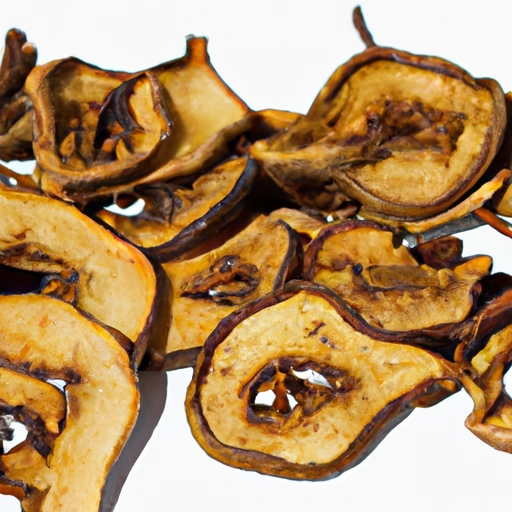Dried Pear
Description

Dried pears are a delectable and versatile food ingredient that brings a concentrated burst of sweet, fruity flavor to various dishes. Made by removing the moisture from ripe pears, this process enhances their natural sugars and extends their shelf life, making them an excellent pantry staple. They can be used across a wide spectrum of recipes, ranging from breakfast items to desserts, and even savory dishes. Dried pears are appreciated worldwide for their chewy texture and rich, caramelized taste.
Common uses
Dried pears are commonly used as a convenient snack, a natural sweetener in baked goods, and as an ingredient in trail mixes. They are also a delightful addition to cereal, oatmeal, and yogurt, and can be reconstituted to add to sauces, stews, and compotes.
Nutritional value
Calories
A 1-ounce serving (approximately 28 grams) of dried pears contains about 67 calories.
Protein
Dried pears offer about 0.5 grams of protein per 1-ounce serving.
Fat
This ingredient is low in fat, with less than 0.1 grams per 1-ounce serving.
Carbohydrates
Carbohydrates account for roughly 18 grams per 1-ounce serving, mostly from natural sugars.
Vitamins
While some vitamin content is lost during the drying process, dried pears still contain small amounts of Vitamin C and Vitamin K.
Minerals
Dried pears are a good source of potassium and also provide some iron and calcium.
Health benefits
Dried pears are a fibrous food, which aids in digestion and promotes gut health. The potassium in dried pears can contribute to heart health by maintaining proper blood pressure levels. Despite their sweetness, they have a low to medium glycemic index, making them a potentially good choice for blood sugar management.
Potential risks
Because they are concentrated sources of sugar, dried pears should be consumed in moderation, especially by individuals monitoring their sugar intake. Additionally, some commercially available dried pears may contain added sugars or preservatives, which could affect dietary restrictions or sensitivities.
Common recipes
Dried pears feature prominently in fruitcakes, muffins, quick breads, and cookies. They are also used in savory recipes like tagines, stuffing, and as a topping for salads and roasted meats.
Cooking methods
Dried pears can be eaten as is or rehydrated by soaking in water, juice, or alcohol. They can be baked, stewed, or even pureed after rehydration.
Pairing with other ingredients
The sweet, nuanced flavor of dried pears pairs well with spices like cinnamon, nutmeg, and ginger, as well as with nuts such as walnuts and almonds. They also complement cheese boards, particularly with blue cheese or aged cheddar.
Summary
Dried pears are a delightful addition to both sweet and savory dishes, offering nutritional benefits and a diverse range of culinary applications. Whether incorporated into recipes or enjoyed as a snack, they bring a touch of natural sweetness and a chewy texture that can enhance any meal.